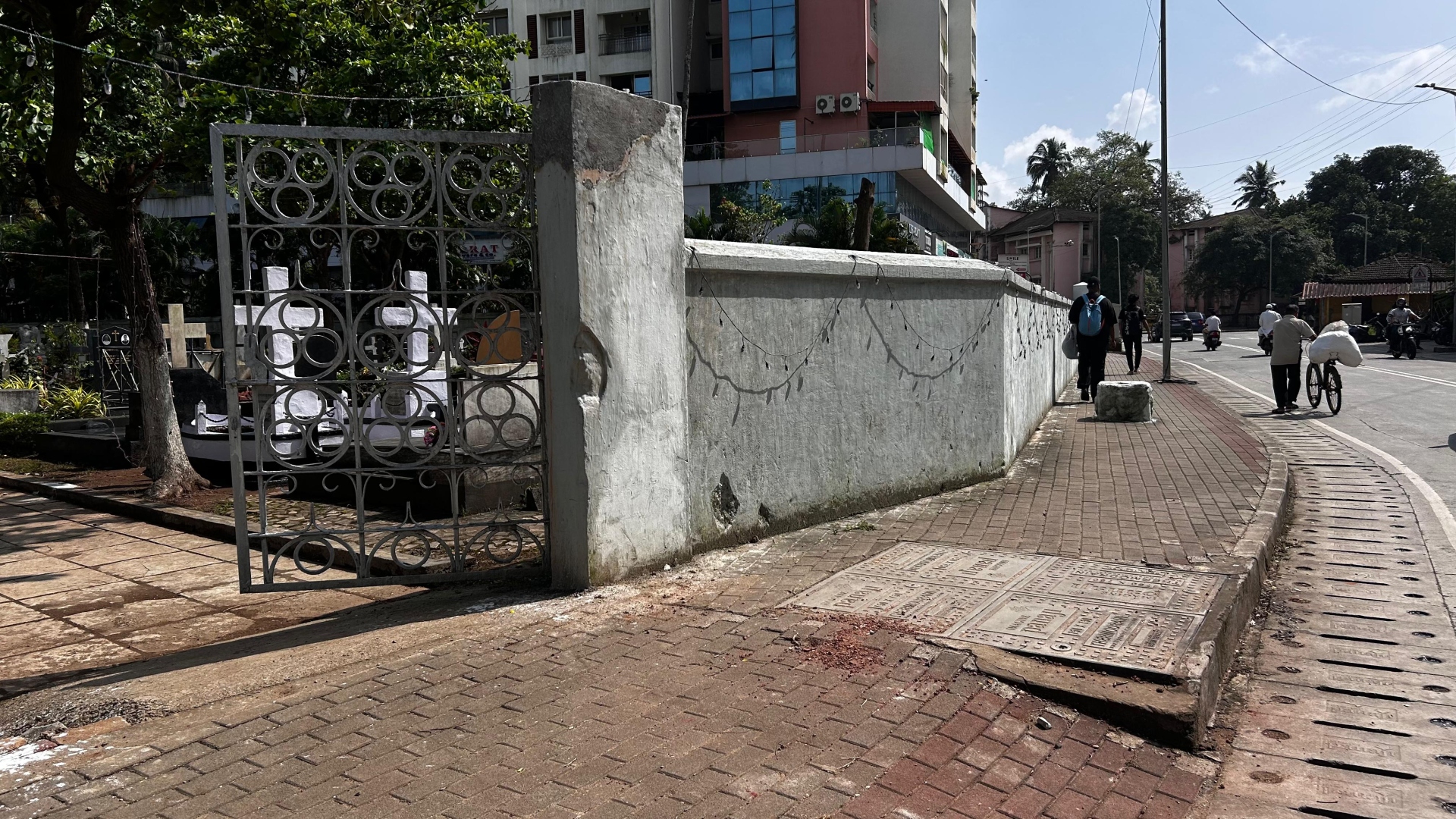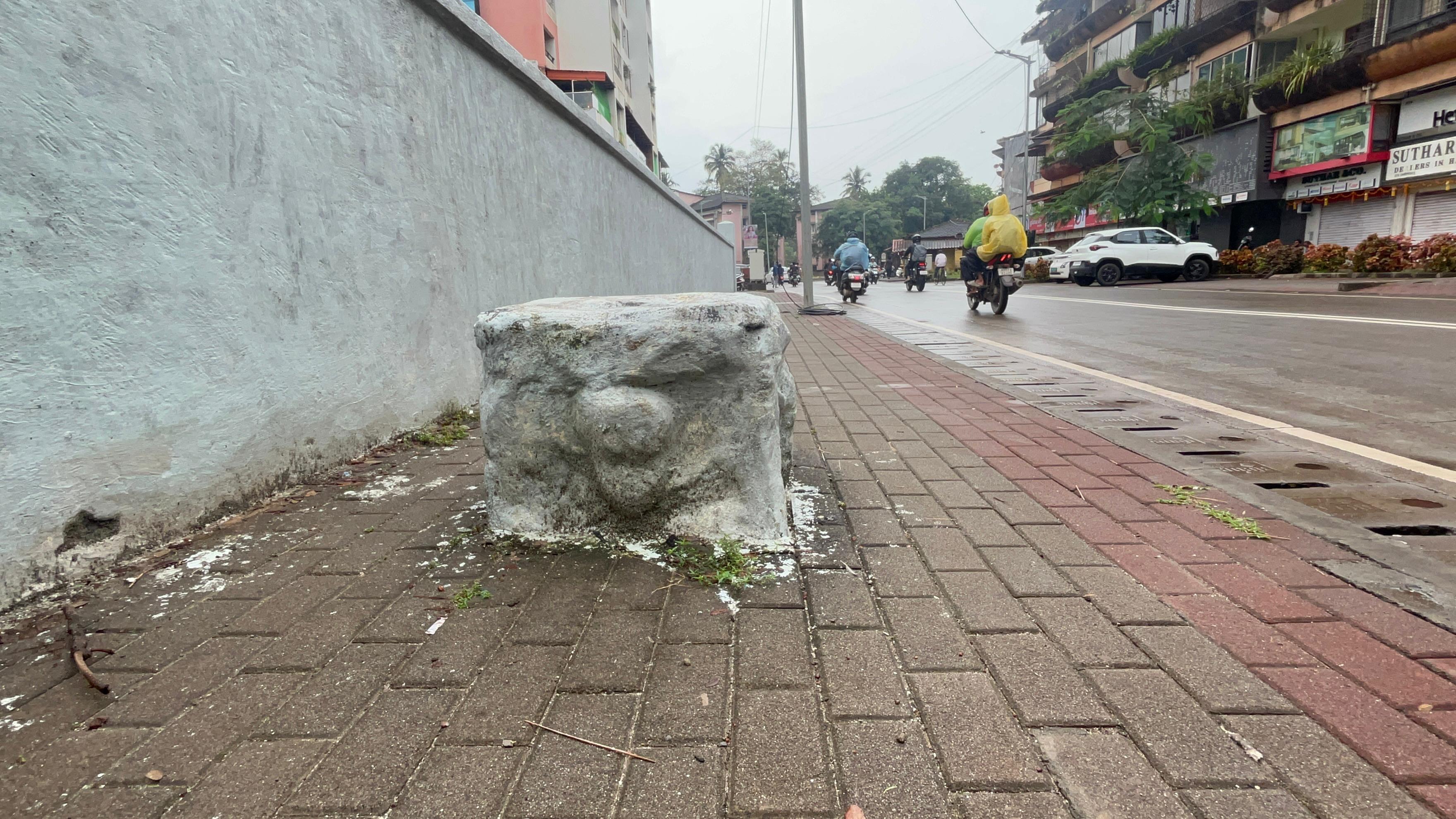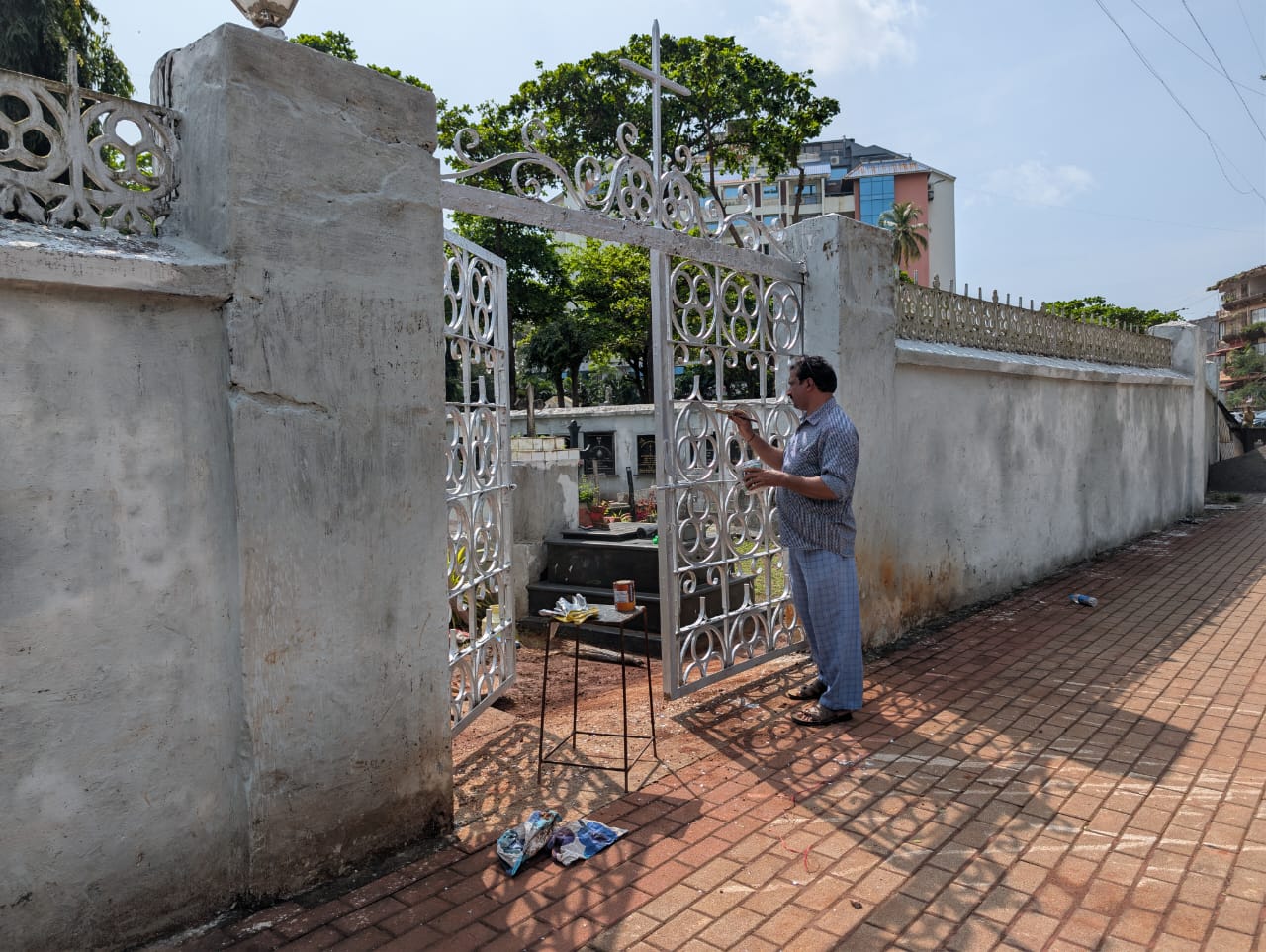
PANAJI
In Goa, where the rhythm of life flows between church bells and temple chants, faith has always found a way to coexist. This year, that shared rhythm finds a remarkable echo as All Souls’ Day and Tulsi Vivah fall on the same date, November 2.
At dawn, Catholic families across Goa will make their way to cemeteries, candles in hand, to pray for their departed loved ones. By dusk, Hindu homes will light up with diyas, flowers, and music to mark the sacred union of Tulsi and Vishnu, a symbolic wedding between the divine and the human. And right in the heart of Panaji, in St Inez, this harmony is not just symbolic. It is visible, tangible, and centuries old.
Outside the St Agnes Church Cemetery stands an ancient Tulsi Vrindavan, believed to date back to the Kadamba period. It is a quiet witness to time and perhaps the most eloquent monument to how Goa’s faiths have long shared both space and spirit.

For locals like Santosh Borkar, who runs the well-known Café Borkar near the cemetery, this connection is not new; it is part of life. “We live together in harmony,” says Borkar, smiling as he recalls past celebrations. “When they have their All Souls’ observance, we wait. After that, we conduct our Tulsi wedding (Tulshiche Lagin). This has been happening for more than a hundred years.”
Each year, residents from nearby homes and shops, including Mayenkar General Stores and Bar Pinto, gather by the old Tulsi plant after the church ceremonies are done. There is no division, no conflict, just a shared sense of belonging. “We do things properly from there,” Borkar adds. “There are no differences between Hindus and others. Everyone respects each other’s faith.” In St Inez, the cemetery and the courtyard are not seen as opposing spaces. They are simply parts of the same neighbourhood, stitched together by memory and habit.
Historian and heritage activist Prajal Sakhardande has spent decades studying Goa’s layered past, and the Tulsi Vrindavan of St Inez remains one of his favourite examples of what he calls living harmony. “It’s a beautiful monument,” he says. “It has carved faces on it; no one really knows whose. There are many theories, but we are certain it belonged to a temple that once stood in this area during the Kadamba era.”
He recalls the fascinating discovery. “An archaeologist told me that while digging a grave in the year 1967, workers found this stone structure. Instead of discarding it, they placed it outside the cemetery. That’s how it has remained, part of the church precinct, but also revered by Hindus.”
Over the years, the Vrindavan has survived urban growth, road expansion, and even the Smart City project. When construction debris once threatened to damage it, the community stepped in. “We protested. The media supported it. And the monument was saved,” says Sakhardande. “That shows you how much people value it, not just as heritage, but as a shared symbol of respect.”
He gestures to the city’s geography to make a larger point. “If you walk down Dada Vaidya Road, you’ll find the Mahalakshmi Temple, then a mosque a few metres away, and right opposite that, a church. That’s Panaji for you, three faiths sharing one road

Inside the church, preparations are underway for All Souls’ Day. Fr Edmund Barreto, parish priest of St Agnes Church, explains the essence of the day. “We call it the commemoration of the dead,” he says. “We remember them lovingly and pray for their souls. They are gone physically, but they are still part of our communion; the living, the dead, and those yet to reach heaven are all connected.”
In the Catholic faith, All Souls’ Day follows All Saints’ Day.
While the first honours those who have reached heaven, the second is a day of prayer for those believed to be in purgatory, awaiting purification. “It is a moment of love and reflection,” says Fr Barreto. “It reminds us not just to pray for our dead but also to prepare ourselves for the day we, too, move on. Life is temporary. Connection is eternal.”
This year, as All Souls’ Day coincides with Tulsi Vivah, Fr Barreto sees meaning in the overlap. “Both days are about communion, one between the living and the dead, the other between the divine and the human,” he explains. “They celebrate the same truth, our relationship with what is beyond us.”
He warns, however, that this sacred understanding risks being lost to commercialisation. “Halloween, for example, has become a social trend even here,” he says. “It shifts focus from prayer and remembrance to spectacle and consumption. We must help the young understand the real spiritual connection we have with our departed.”
Fr Barreto echoes what Sakhardande and Borkar live every day, that faiths may differ, but reverence, remembrance, and respect remain the same. “There’s only one God,” he says quietly. Different religions are just different paths to the same mountaintop. As Mahatma Gandhi said, to reach the mountaintop, there are many paths, but we all reach the same peak. Religion should unite us, not divide us.”
By sunrise, candles will flicker in cemeteries. By sunset, diyas will glow in courtyards. Between the two, St Inez will once again stand as a reminder that harmony does not need to be preached; it just needs to be practised.
As one community prays for souls and another celebrates a divine wedding, Goa will quietly show the world what living harmony truly looks like: steady, natural, and deeply human.